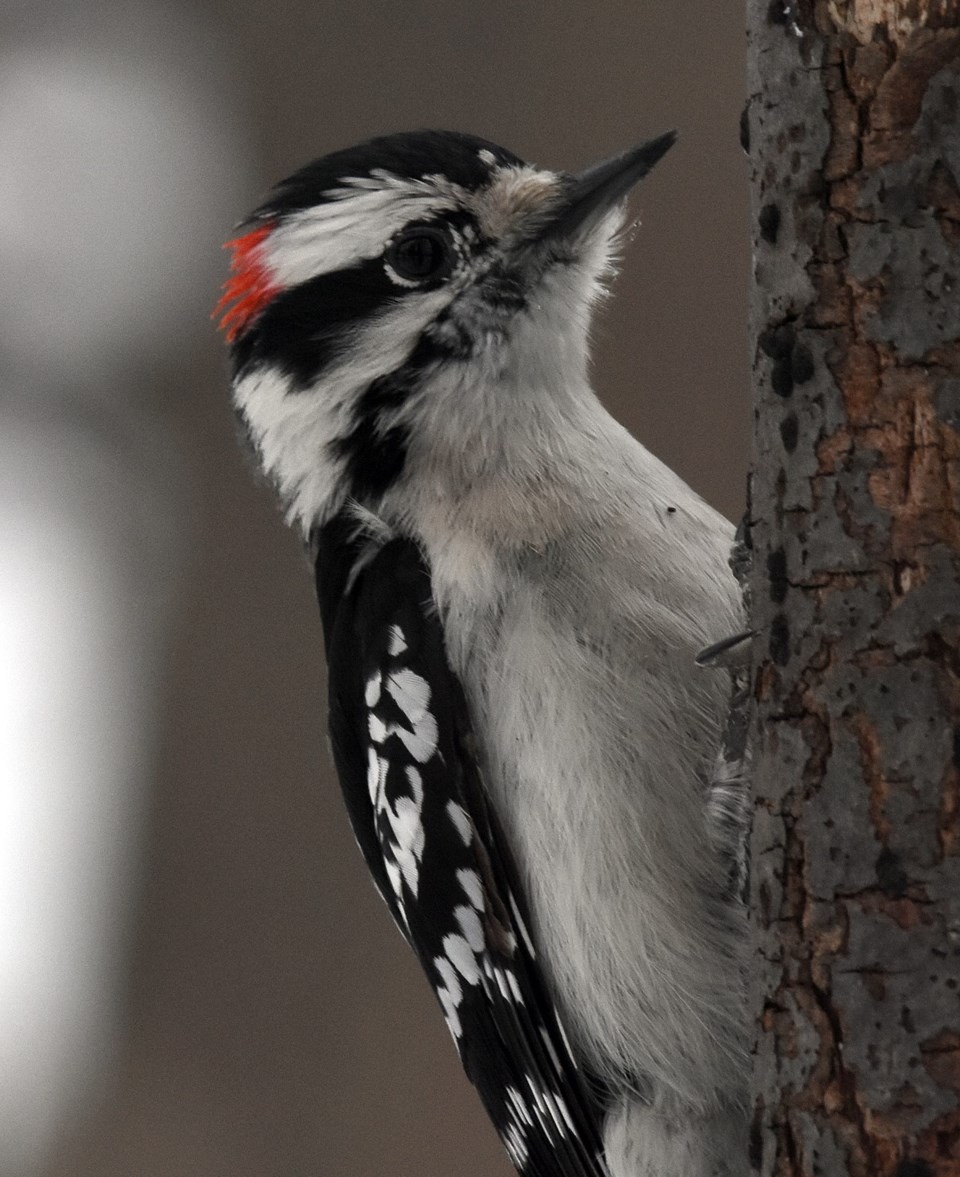Just as the temperature slides up and down the thermometer, so, too, does the level of activity around our bird feeders. Interestingly, the warmer the weather, the fewer the birds.
However, a nippy cold morn will bring with it a bustling of avian activity, with small flocks of chickadees and juncos flitting between the quartet of blue jays and the solemn cluster of mourning doves.
Grandson Toby and I have the daily rivalry of who can record the most birds onto the spreadsheet attached to the 'fridge door.
Often by the time I stagger into the kitchen with just one eye open, Toby will greet me with, "Grandpa: two blue jays, three chickadees, two hairy woodpeckers and one black squirrel." Of course there are mornings when I get up in time to do the first tally, but those days seem farther apart for some reason or another.
To up the challenge I rearranged the tally sheet to have a row not just for species, but to record whether the bird was a male or a female. We didn't do this with all the species, as trying to separate the boy blue jays from the girl blue jays can be quite tricky, so the gender divided list has been kept to woodpeckers, nuthatches and cardinals.
In the woodpecker category are listed hairy, downy, and pileated. The male hairy and downy woodpeckers have a splash of red on the back of their heads; the male pileated sports a red head but an additional red "moustache"; the females lack these blood-red splashes of colour.
The trick is to observe the back of the head of a woodpecker, which is a challenge when it feeds on the backside of the peanut feeder or perches high up in a maple tree. Patience is required ... but sooner or later it will turn its head and reveal its true character with a flash of that red patch, or not.
There are many studies done on birds, trying to figure out the ancestry or genetic linkages of one species to another, or why there are variations of colour within a species. This type of research is re-writing the books of our understandings of all things wild.
And speaking of re-writing stories (notice the smooth segue here) let's spend a moment reflecting on how the woodpeckers obtained that smear of red atop their heads. It's actually an award, a medal if you will, bestowed upon an informant during a bloody battle. As fanciful as that may sound, the story of the incident was duly recorded 164 years ago by a poet named Henry Wadsworth Longfellow.
Well OK, "duly recorded" may well have been among the first "fake news" stories to get inked, but it certainly caught the attention of the population of the day.
In 1855, Mr. Longfellow published a tome of a poem which he called The Song of Hiawatha, a lengthy accounting of the life and times of a demigod who was raised on the south shores of the big lake they called Gitche Gumee, on the shores of the Big-Sea-Waters (now referred to as Lake Superior).
Hiawatha's mother was Wenonah, daughter of Nokomis. Nokomis herself came from the full moon but her passage way was cut off by a jilted suitor so she was henceforth stuck here on Earth.
Apparently she was married but not a mother when she arrived, but soon after gave birth to a series of daughters (admittedly a little fact-checking may be needed here).
The first born was called Wenonah, who despite her mother's sage advice to avoid a certain ner'do-well god called Mudjekeewis (known to his many followers as the West Wind), soon found herself with child.
With the birth of Hiawatha and the abandonment of her lover, Wenonah soon passed away, leaving grandma Nokomis to raise the lad in a wigwam on the shores of the Big-Sea-Waters.
Like his warrior father, Hiawatha had a penchant for killing rivals and others who seemed to have better fortune than himself. One such battle took place against a rather imposing chap called Megissogwon, who did set up the situation by claiming to have earlier killed the father of Nokomis. And so the two went at it with each other.
After suffering a series of defeats, Hiawatha hid in the forest for a breather. A woodpecker had been watching this battle and was perhaps wanting to see it finished so that it could leave and gather some grubs to take back to the Missus waiting on nest in a distant hollow tree.
"Hey, Hiawatha, the only soft spot on Megissogwon is the top of his head. Hit him there with your last three arrows tipped in jasper and wrap this thing up."
So he did, and he won. To thank the woodpecker for his invaluable advice, Hiawatha dipped his finger into the blood and placed a dab on the woodpecker's head, an award for providing the intel that swayed the outcome of the battle.
And that's why only the male woodpeckers have the red patch on their heads. Should you doubt this tale (and why would you) I would encourage you to read Mr. Longfellow's accounting of this incident for yourself.
